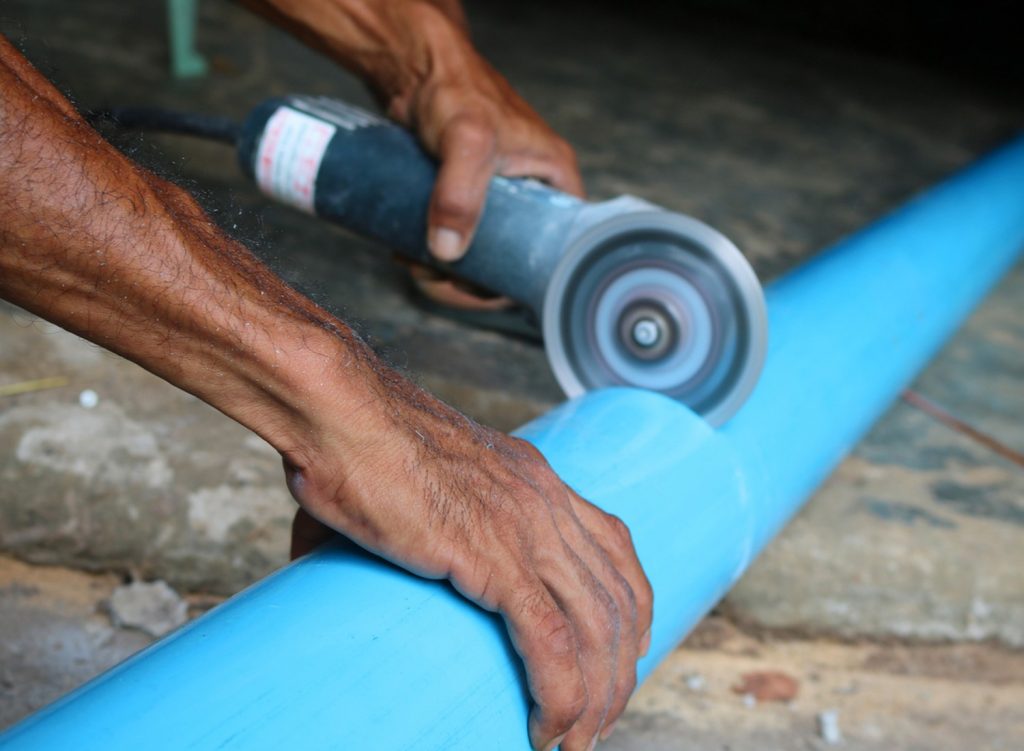How to Cut PVC Pipe: 3 Different Ways

PVC pipes are widely used in plumbing, construction, and various projects due to their durability and affordability. However, cutting PVC pipes might seem intimidating for beginners. In this blog, we’ll cover three straightforward methods to cut PVC pipes. This way, you can choose the one that suits your project best.
Whether you’re new to this or looking for different approaches, we aim to simplify the process. Our guide provides practical insights into various cutting techniques, ensuring you can handle PVC pipe cutting with confidence and precision, regardless of your experience level.
Method 1: Using a Hacksaw
A hacksaw is a versatile tool that you can use to cut through various materials, including PVC pipes. To cut PVC pipe using a hacksaw, follow these steps:
- First, mark the location on the pipe where you want to cut using a pencil or marker.
- Place the PVC pipe in a vice grip to hold it securely in place.
- Using a hacksaw, start cutting at the marked location by applying steady pressure and using long, smooth strokes.
- Continue sawing until you have cut through the entire pipe.
- Use sandpaper or a file to smooth out any rough edges.
One of the main advantages of using a hacksaw to cut PVC pipe is that it is a cost-effective method, as hacksaws are relatively inexpensive. However, this method may not be suitable for large projects or those that require precise cuts.
Method 2: Using a PVC Pipe Cutter
A PVC pipe cutter is a specialized tool designed specifically for cutting PVC pipes. It provides more precision and control compared to a hacksaw. Here’s how to use a PVC pipe cutter:
- Place the PVC pipe in the jaws of the cutter, aligning the blade with the marked cutting location.
- Squeeze the handles of the cutter together to make a clean cut through the pipe.
- Release the handles and remove any burrs or rough edges using sandpaper or a file.
PVC pipe cutters are available in various sizes and you can find them at most hardware stores. They are relatively easy to use and produce clean, straight cuts. However, they may be more expensive than using a hacksaw.
Method 3: Using a Circular Saw
For large projects that require many cuts or precise measurements, using a circular saw may be the best option. Here’s how to cut PVC pipe using a circular saw:
- Place the PVC pipe on a stable surface.
- Use a ruler or measuring tape to mark the cutting location on the pipe.
- Set the depth of your circular saw blade to slightly deeper than the diameter of the PVC pipe.
- Hold the pipe securely in place and start the saw, making a smooth and steady cut along the marked line.
- Use sandpaper or a file to smooth out any rough edges.
Using a circular saw, or other saw type like a compact reciprocating saw, can be more advanced than other methods, but it allows for precise and efficient cuts. However, using this method may require additional safety precautions and proper training on how to use the saw safely.
Tips for Cutting PVC Pipe
Here are a few tips to keep in mind when cutting PVC pipe:
- Always wear protective gear, such as safety glasses, masks, and gloves, to protect yourself from any potential injuries.
- Use a sharp blade or tool to make the cuts. Dull blades can cause uneven cuts and may damage the pipe.
- Measure twice, and cut once. Double-check your measurements before cutting to ensure accuracy.
- Sand down any rough edges or burrs after cutting to prevent injuries and create a smooth finish.
Conclusion
Cutting PVC pipe may seem like a daunting task, but with the right tools and techniques, it can be a simple and efficient process. Whether you choose to use a hacksaw, PVC pipe cutter, or circular saw, always prioritize safety and accuracy. With these methods in mind, you can confidently tackle any project that requires cutting PVC pipe.
